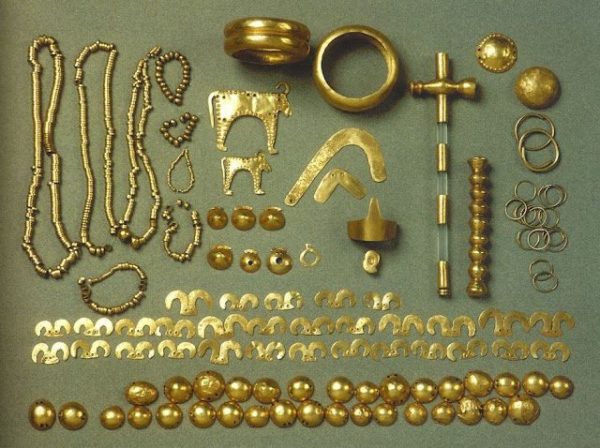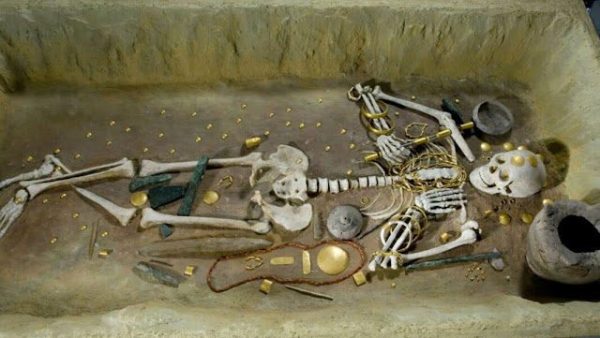The Necropolis of Varna, a burial ground on the Bulgarian Black Sea coast dating back to 4,660–4,450 BC, is home to the oldest known gold objects. This archaeological site, also known as the Varna Cemetery, is a testament to the Chalcolithic phase of the Varna culture, spanning 6,000 to 6,500 years ago.

Archaeological investigations in Varna have revealed a total of 294 tombs, containing approximately 3,000 gold artifacts. Amidst these, Tomb 43 stands out, holding the skeletal remains of an individual presumed to be a monarch or leader.
Discovered in 1972 during preparations for a tin factory, the necropolis became a focal point of attention when a 22-year-old excavator operator, Raycho Marinov, stumbled upon various artifacts. Recognizing their significance, Marinov contacted archaeologists, leading to the revelation of the extensive burial site.

The Chalcolithic graves of the necropolis, especially those from the Copper Period where the gold treasures were unearthed, are dated between 4,560 and 4,450 BC. This period marks the emergence of human civilization in ancient Europe, with the Balkans, Lower Danube, and the Black Sea coast serving as cradles.
Notably, the Varna culture exhibited commercial connections with distant regions, as indicated by the presence of rock salt from Provadiya-Solnitsata. Seashells of the Mediterranean mollusk Spondylus found in the tombs were likely used as a form of currency.

Archaeologists suggest that the uncovering of substantial gold in several tombs signifies the existence of a state and royal institution since the Copper Age on the Balkan Peninsula. The richness of the findings reinforces the idea that metal, especially gold, held symbolic importance rather than just economic value.
Tomb 43, with an individual of stature buried with over 1.5 kg of gold, implies a regal status. The gold artifacts, totaling more than 3,000 pieces and weighing 6.5 kg, are diverse, ranging from stone and copper axes to teardrop applications, rings, necklaces, and chains.
Another intriguing discovery in Tomb No. 36 includes over 850 gold artifacts, among them a tiara, earrings, necklace, belt, bracelet, breastplate, and a gold scepter with a hammer. The burial was symbolic, and the artifacts were carefully arranged.

In these ancient societies, the role of a blacksmith was equivalent to that of a king. The Varna Chalcolithic Necropolis provides insights into the shift from matriarchal to patriarchal societies, celebrating the significance of the blacksmith as a creator.
With only about 30% of the necropolis explored, the ongoing excavations promise further revelations about the early human civilizations that thrived in this region over 6,000 years ago.